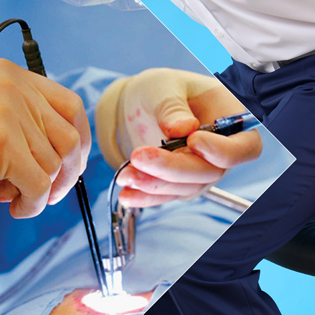Laser surgery has revolutionized the treatment of anorectal conditions like piles (hemorrhoids), fissures, and fistulas, offering patients a minimally invasive and highly effective alternative to traditional surgical methods. These conditions can cause significant discomfort and impact the quality of life, making laser surgery an attractive option for those seeking quick relief and a shorter recovery time.
Hemorrhoids are swollen blood vessels in the rectum or anus, and they can be quite painful and distressing. Laser surgery for piles is known as laser hemorrhoidectomy. During the procedure, a surgeon uses a laser beam to shrink and remove the inflamed or swollen hemorrhoidal tissue, which causes the hemorrhoids to reduce in size. This method offers several advantages, including less pain, minimal bleeding, and a quicker recovery compared to traditional hemorrhoidectomy techniques. Moreover, it is a minimally invasive procedure, often performed on an outpatient basis.
Anal fissures are small tears or cracks in the lining of the anal canal, often causing severe pain and bleeding during bowel movements. Laser surgery for anal fissures involves using a laser to precisely cut and seal the affected tissue, promoting faster healing. This minimally invasive approach can provide significant relief and reduce the risk of recurrent fissures.
Anal fistulas are abnormal tunnels or passages that develop between the anal canal and the skin around the anus. These can be painful and recurrent. Laser surgery for anal fistulas, often referred to as laser fistulotomy or laser fistulectomy, involves using a laser to open and drain the fistula, while simultaneously sealing the tract. This approach is less invasive than traditional techniques, leads to quicker healing, and is associated with lower recurrence rates.
Laser surgery for anorectal conditions offers numerous benefits, including:
Recovery following laser surgery for piles, fissures, and fistulas is generally quicker compared to traditional surgical methods. Patients can often return to their regular activities within a few days to weeks, depending on the extent of the procedure. Post-operative care may include dietary modifications, maintaining good hygiene, and taking prescribed medications for pain relief and to prevent infection.
